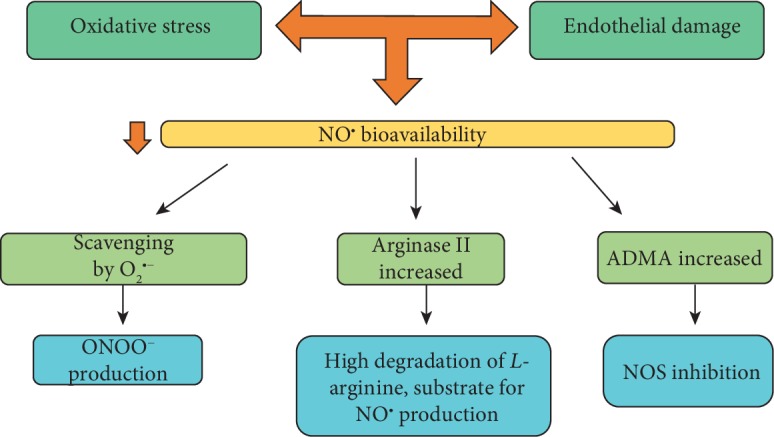Figure 3.

Routes through which the bioavailability of nitric oxide decreases in preeclampsia. Some pathways can contribute to the lower bioavailability of NO• in the PE. The first one involves ROS, where it is suggested that O2•− captures NO• for the formation of peroxynitrite (ONOO−), which has a high redox potential [13]. In addition, ONOO− reacts with lipids, leading to lipid peroxidation (LP) and generation of malondialdehyde (MDA) and its conjugates [97]. The second path involves the increase in the production of the enzyme arginase, responsible for catalyzing the conversion of L-arginine to L-ornithine and urea [98]. Therefore, the bioavailability of arginine for NO• formation is compromised [99, 100]. The last one involves the presence of ADMA, an endogenous inhibitor of the enzyme nitric oxide synthase (eNOS), which is increased in PE and is able to decrease the synthesis of NO• [14]. Legend: ADMA: dimethylarginine; NOS: nitric oxide synthase. Adapted from Sanchéz-Araguren et al. [14], Sankaralingam et al. [13], Takacs et al. [97], Rabelo et al. [98], Coman et al. [99], and Morris Jr. [100].
